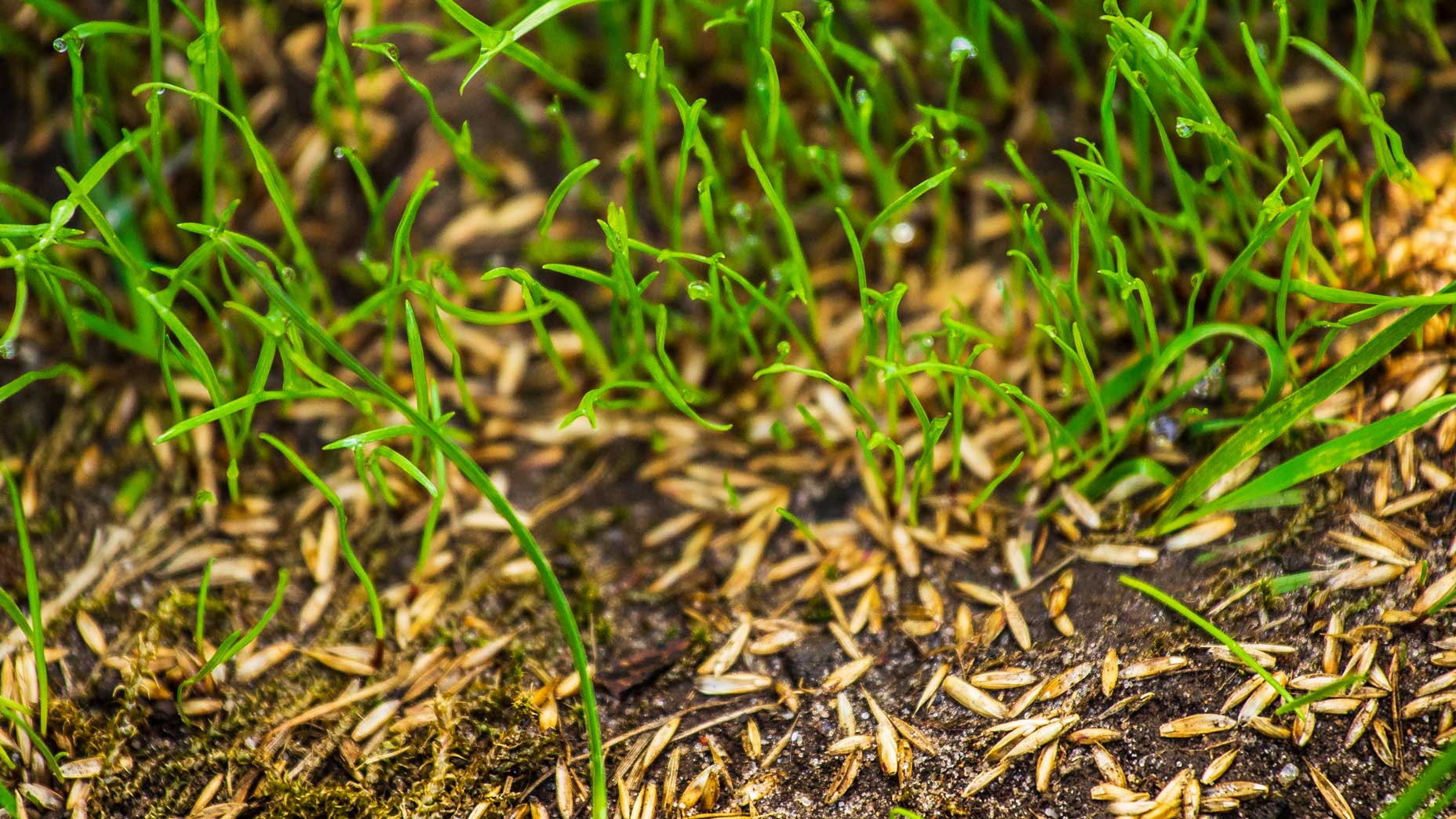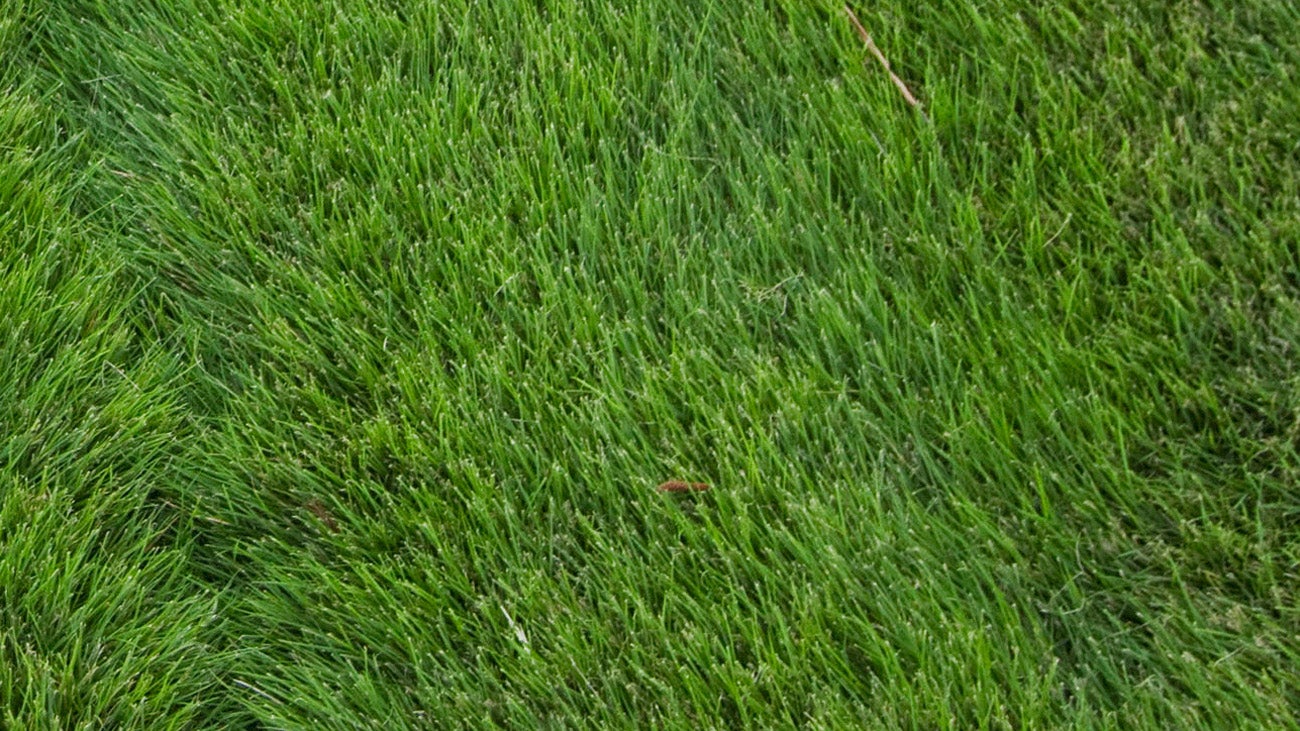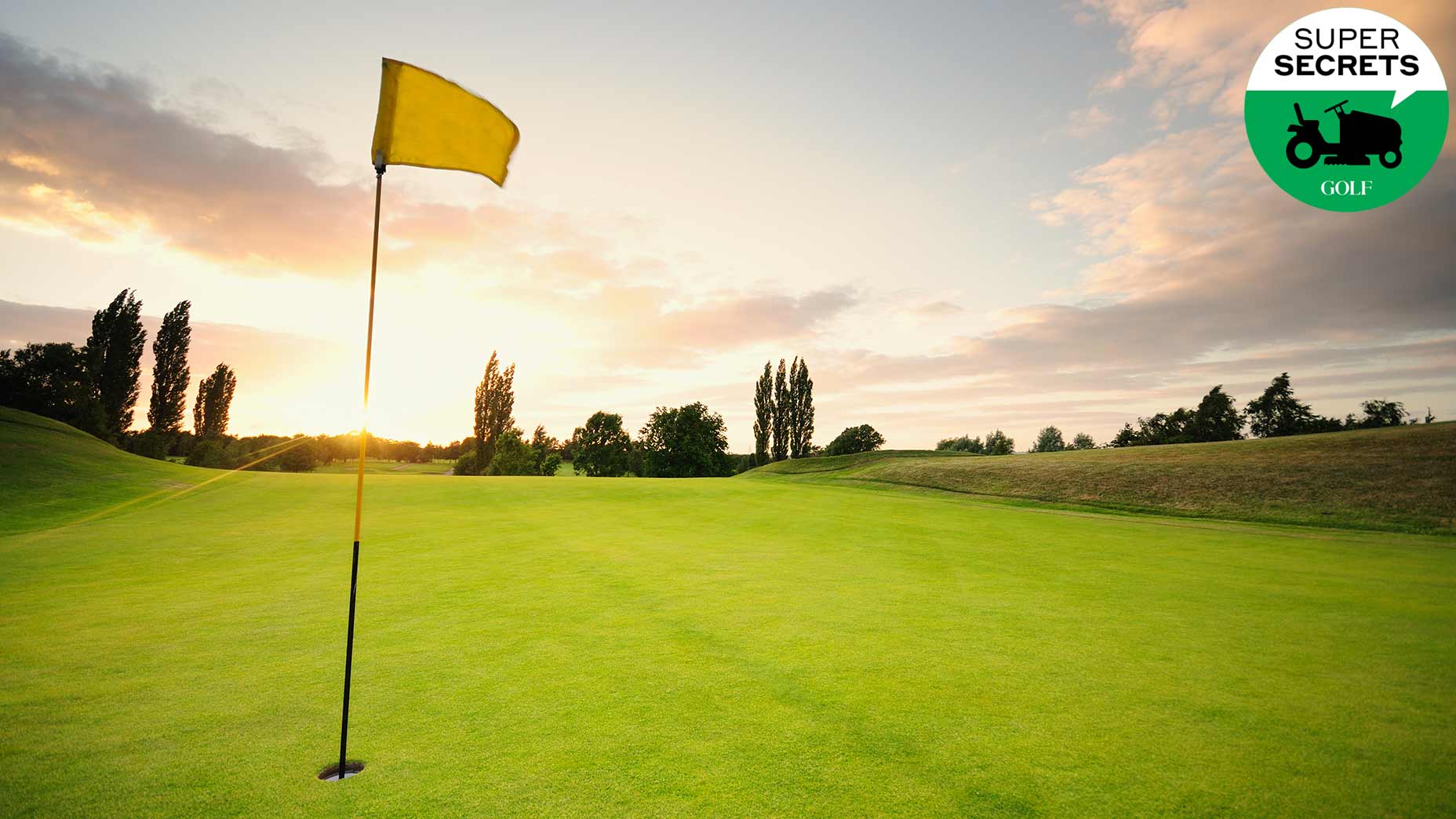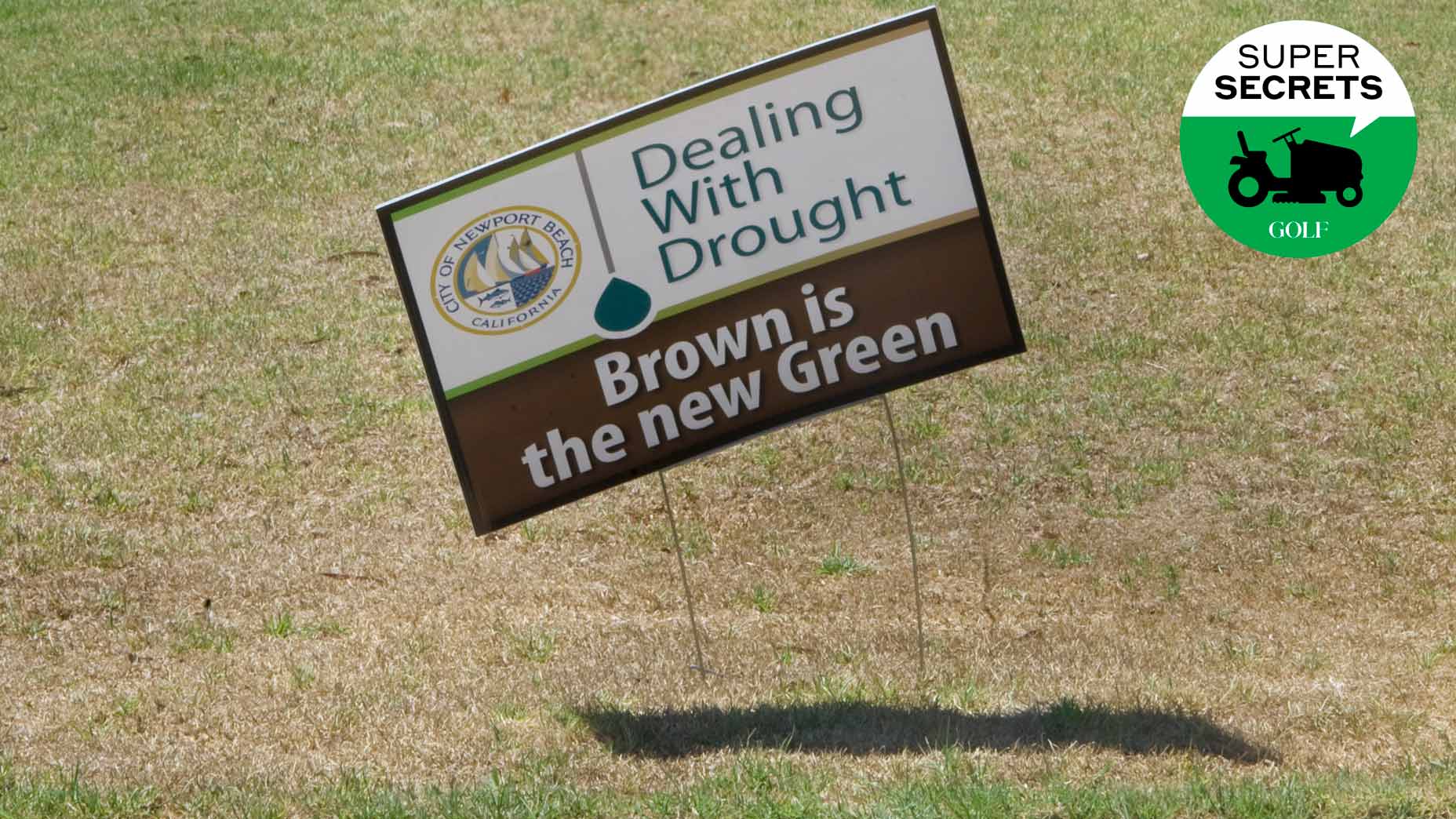6 grass types every golfer should know, and how each affects your game
- Share on Facebook
- Share on Twitter
- Share by Email
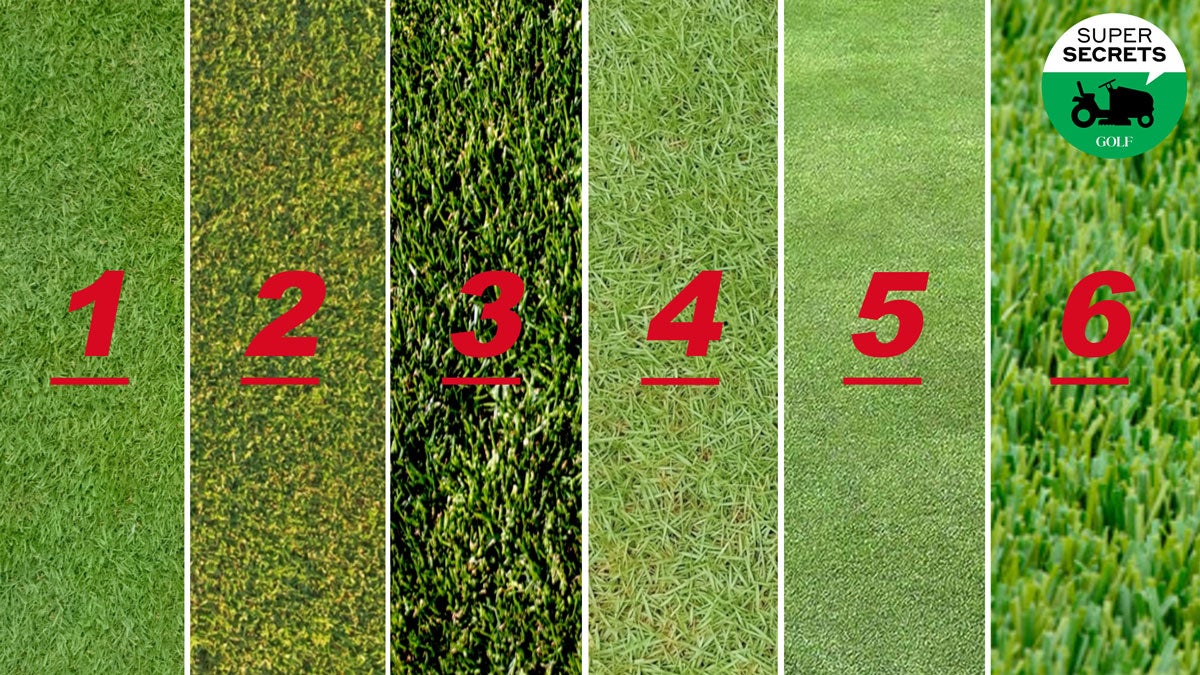
Do you know your grass types? From far left: Bermuda, bentgrass, fescue, zoysia, poa and rye.
getty images
Connoisseurs of grass know that different varieties have different effects. Easy now, Spiccoli. We’re talking about turf grass. There are many kinds, fit for different climates and bearing different traits that carry different implications for you, the golfer. It’s a sprawling subject, too large to cover in one doctoral dissertation. What we can offer here are snippets, thumbnail insights from an expert.
His name is Shawn Westacott. He is the superintendent at the Club at Comanche Trace, in Kerrville, Texas. He’s also a fine player and a past winner of the Golf Course Superintendents Association of America’s national championship, an event that draws some darned-good sticks. Given his experience growing — and competing on — a range of grasses, we asked Westacott for his cribnotes on six common turf types, along with a few details on how each plays when properly maintained.
1. Bermuda
When you hear top players talking about grain, they’re often talking about Bermuda. They’re not wrong. A durable, drought-tolerant, warm-season turf that is prevalent across the South, Bermuda can indeed get grainy. But that trait is tempered when the grass is tightly mown, the way that Tour pros like it. In that state, Westacott says, Bermuda provides a beautifully firm, fast and true surface. It can also be pure playing as it gets longer, providing the kind of cushion that most amateurs prefer.

Thing is, the more Bermuda grows, the more grain it shows, which can affect everything from roll out on the fairway to pace and break of putts. On approach shots from the fairway, when you’re swinging faster, you might not notice the effect of grain. But there’s no ignoring it on and around the greens. On chip shots into the grain, Bermuda is notorious for snagging clubs. Similarly, down- or up-grain putts can make all the difference between birdie bids left woefully long or short. As a rule of thumb, if the grass looks shiny, you’re putting with the grain. If the turf has a duller tone, the grain is running against you. Adjust accordingly.
2. Bentgrass
Unlike your grandparents, bentgrass has little interest in retiring to Florida. It’s a cool-season grass, with thin blades that can be mown closely. Compared to Bermuda, bentgrass has little grain. As with other turf types, it can play differently depending on the region and time of year. But in the spring and fall, especially, Westacott says, bentgrass in the Northeast is a thing of beauty, smooth, firm and fast running on the fairways and greens.
The best grass seed for your yard, according to a golf-course superintendentBy: Josh Sens
Because bentgrass doesn’t fare well in withering heat, it needs a lot of water when temperatures soar. Consequently, if you play on bentgrass at the peak of summer, you might find the greens and fairways to be relatively soft. When it gets parched, bentgrass can start showing signs of strain by turning slightly brown. But that doesn’t mean that it’s performing badly. In fact, Westacott says, bentgrass is often at its best when it’s slightly stressed.
3. Fescue
“Oh, he’s found the fescue.” Hearing that phrase, many of us envision wispy, golden grasses, standing tall enough to swallow Ian Woosnam. Fescue, after all, is the grass of links golf, and it often populates the unmown native areas where you would rather not hit your ball. But fescue can serve wonderfully as short grass, too, great on fairways, greens and tees for all kinds of reasons.

Course operators love it for its ease of maintenance. Slow growing, it requires less frequent mowing than many other grasses. It needs less water, too. As a playing surface, you could call it the purist’s preference, providing the firm, bouncy conditions that we think of when we picture golf across the pond.
4. Zoysia
If zoysia were a teenager, you might compliment it for its posture. It stands up straight, yielding sweet lies in the fairway. “The ball is teed up so nicely for you, it almost feels like cheating,” Westacott says.
Zoysia … oh, boy-a! Why the grass at Bellerive — yes, the grass — is the unheralded star of the showBy: Michael Bamberger
A warm-season grass that is cold-tolerant enough for transition zones, zoysia also asks for little water, which allows it to be kept firmer than most grasses. It also has less grain than Bermuda, so it’s got that going for it, too. If there’s a maintenance drawback, Westacott says, it’s that zoysia is susceptible to disease, and the protective applications it requires can get expensive, making it impractical for courses on tight budgets.
From a player’s perspective, though, zoysia can be blissful. The only thing that’s tricky is that zoysia can be “sticky,” Westacott says. “Its blades are so rigid and tight, you might think you’ve hit a perfect bump-and-run, and the grass will just grab your ball.”
5. Poa annua
Golfers love excuses, and poa often serves as scapegoat. An alternate logo for the PGA Tour could be a player pointing in frustration at a missed putt, blaming his poor stroke on this cool-season grass. The bad rap has roots in reality. Poa is fast-growing, and the seedheads it produces can lead to late-day bumpiness on the greens.

But no grass is perfect. And when Westacott talks poa, he gravitates more to its strengths. Not only does it tolerate low-light and damp environments, poa also stands up to heavy traffic. Properly maintained, poa can play as purely as any surface. “The greens at Winged Foot are poa,” Westacott says. “And you’re not going to find any putting surfaces better than those.” (Poa is also found at Pebble and is the dominant strain on Oakmont’s fabled greens).
What’s more, the same seedheads that some players grouse about can be a plus, Westacott says. “Sometimes, on bent or Bermuda, I find it tough to pick out lines,” he says. “But on poa, there will often be a little seedhead or a slight discoloration that makes it easier to get my line.”
6. Rye
If bentgrass and Bermuda are the turf world’s John and Paul, rye grass is more like Ringo. It’s not the biggest star, but take it away, and you might spoil the show.
Commonly used in autumn overseeding, rye grass often comes on the stage as Bermuda goes dormant, perking up appearances and playability. Rye requires a fair amount of water, so if you play a course shortly after overseeding, expect soft conditions. For that same reason, rye can sometimes seem a little “sticky,” Westacott says.
But it has many winning traits. Because it is fine-textured and grows upright, Westacott says, rye allows for lovely striping and other aesthetically pleasing mowing patterns. Like a lot of pretty things, it can be fragile. It does not do well in heat, and if you mow it too low, it won’t keep invaders out for long. Those traits help explain why courses don’t use rye on greens. But elsewhere, rye can be a primo surface. The Masters, for example, is played on fairways overseeded with rye. If it’s good enough for Augusta, ’nuff said.
Latest In Lifestyle

Josh Sens
Golf.com Editor
A golf, food and travel writer, Josh Sens has been a GOLF Magazine contributor since 2004 and now contributes across all of GOLF’s platforms. His work has been anthologized in The Best American Sportswriting. He is also the co-author, with Sammy Hagar, of Are We Having Any Fun Yet: the Cooking and Partying Handbook.

